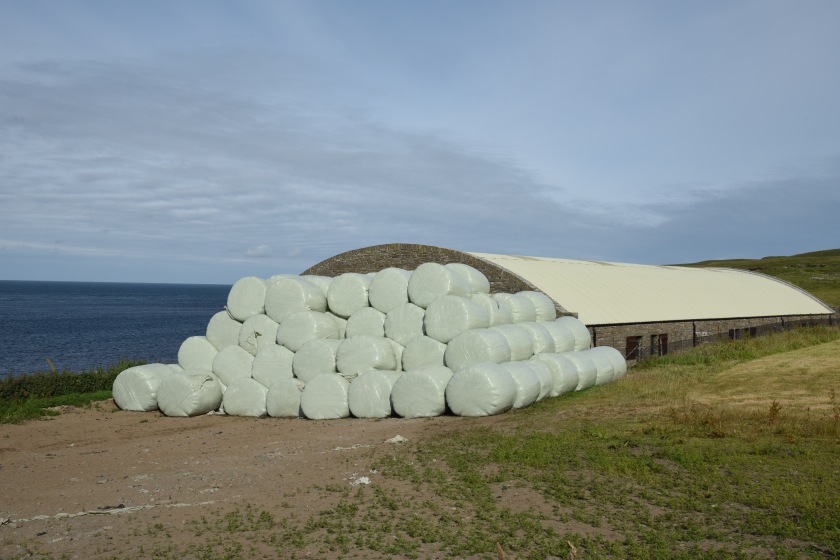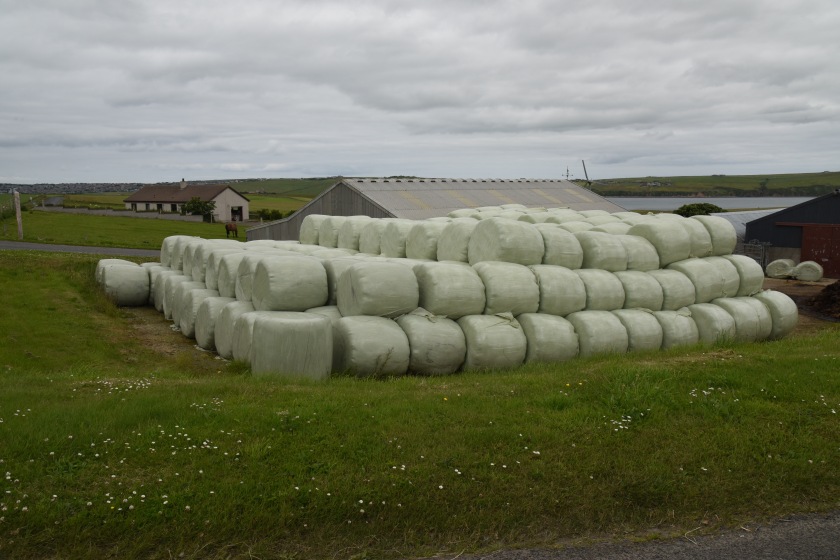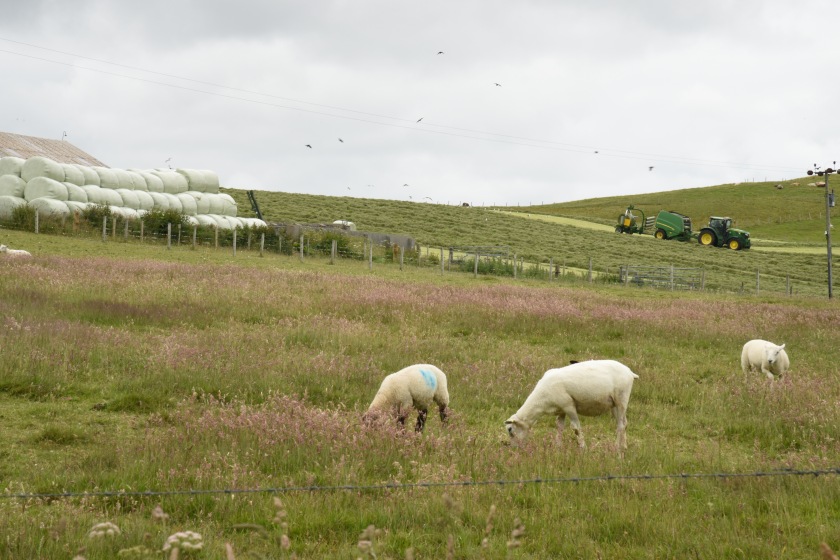The dominant agricultural crop on Orkney is grass. Almost any field that does not physically contain prize beef cattle or other livestock is seeded with high-quality grass to turn into hay, haylage and silage to feed the animals through the winter.
When we arrive on Orkney towards the end of May, we bring spring with us. At this stage the grass has barely grown an inch since planting. This year Orkney luxuriated in a particularly warm and sunny spring, so perhaps a little earlier than usual the first hay cuts were being taken well before the end of June. Now at the middle of July, cutting is proceeding at furious pace; wherever you look fields are being cut by mowers, rowed-up and turned by the raking machines, and now the baling machines are out. Mountains of silage bales adorn the land and the silage clamps are full and covered with tarp and tyres (not unlike that we removed from the Ness of Brodgar recently). The landscape is now a patchwork as shades of green are interspersed by the pale-coloured squares of freshly cut fields. Here’s a video showing silage baling using fancy machinery.
Grass can be stored for the winter in a number of ways. Hay is grass that has been cut at a late stage of growth in order to reduce moisture content. It still requires time and effort to dry by spreading and turning it. However, Orkney farmers haven’t got the time or necessarily the weather for this – moreover, they also need to get three grass cuts from their land each summer season. Silage is basically grass that has been cut at an early growth stage and pickled using natural anaerobic fermentation – in theory it can remain usable for years. It is produced either by sealing bales in airtight packaging, as in the video, or packing several tonnes of grass into a “clamp” where it is pressed (by a heavy tractor), covered with plastic tarpaulin and weighted down with old tyres. For the latter the grass is chopped more finely and carried straight off to the clamp in a trailer rather than being dried in the field for a few days. However the clamping process can produce liquid effluent that needs careful environmental handling (although cattle reportedly like a drink of the mildly alcoholic liquor). Both production methods have a whole raft of advantages and disadvantages which one imagines the Orkney farmers spend a lot of time debating. Smaller quantities of green hay are also taken and lightly baled with mesh for drying in storage. Whether this meets the proper definition of “haylage” is a matter of opinion so we won’t go there.


Meanwhile, a bit like these sheep, the Orkney mole is keeping his head down lest he gets his curls trimmed by a mower!
The Orkney Mole apologises for the lack of recent reports. We have been experiencing broadband issues in the deepest reaches of Orkney Mainland. Although these are now ostensibly resolved, it has still been a struggle to get this post out with larger than average images.

